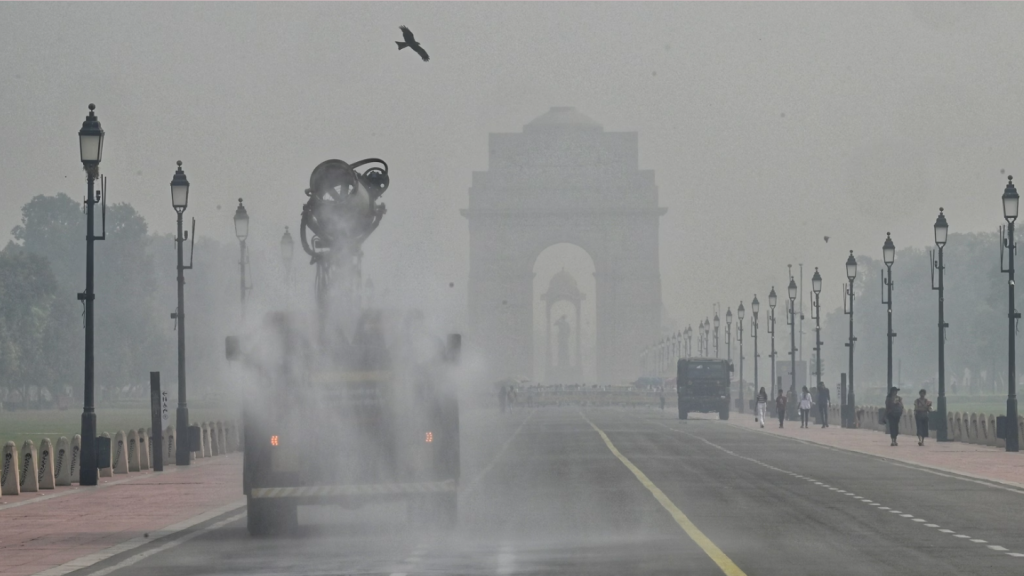Climate change is no longer tomorrow’s crisis and calls for more than hypothetical plans and models. Extreme weather patterns and fatal incidents are becoming more and more severe and frequent. The system warns us constantly with no success.
As of 2024, weather patterns in India are only becoming more extreme, and accidents in nature are only becoming more frequent. Let us look at 5 incidents that recently took place.
1. Mass loss of fish due to Industrial pollution
On 20 May 2024, a massive fish kill occurred in the Periyar River in Kerala. The incident happened due to the discharge of polluted water from the Edayar Industrial Area. The local aquatic ecosystem faced devastating losses, also causing the fish farmers a significant economic loss.

The cause of significant loss was reported to be the release of effluents from industries upriver in the Eloor-Edayar area of Ernakulam. The release of sewage aggravated by rainfalls may have contributed to the unregulated discharge of effluents, as suspected by locals. Officials from the aquaculture department at the Kerala University of Fisheries and Ocean Studies (KUFOS) explain how the increase in the levels of sulphur dioxide, nitrogen dioxide, and carbon dioxide causes sudden variations in the pH level, affecting the fish. A decrease in the alkalinity of the water reduces the available oxygen and causes the fish to suffocate
2. Yamuna lies covered in froth due to untreated toxins released in it
The Yamuna River has been making headlines since mid-October due to a layer of foam covering it. The blanket of toxic foam was captured by satellites as well. The foaming of the Yamuna River is due to several factors, such as the release of untreated wastewater from 18 drains into the river and the dying of water hyacinths. The faecal contamination levels also reached a record in September 2024. This indicated a significant level of sewage and contamination. Industrial and untreated effluents containing phosphates and detergents from mills and factories in UP also find their way to the streams of Yamuna, causing the river to froth.

The extreme levels of industrial waste also cause the water temperature to rise, killing all microbes and aquatic life. The froth contains harmful organic matter and also releases volatile organic gases directly into the atmosphere, contributing to air pollution.
3. Joshimath landslide
A massive landslide took place on 12th October in the Joshimath area of Chamoli district in Uttrakhand. Sources claimed that the landslide took place due to an unauthorised blast for construction near the 5 km long under-construction bypass from Helang to Marwari, about 12 km from Joshimath city. Border Road Organisation Commander Ankur Mahajan denies it. There have been incidents of landslides in Joshimath and other surrounding hilly areas wherein vehicles and citizens were caught in the midst of it. Mostly, it has been known to be triggered by incessant rains in the area.

Cracks on the ground have been observed, and the land in Joshimath is known to have been sinking due to construction and other reasons, which led to the Apex Court ordering the Uttarakhand government to submit a detailed affidavit on the actions taken on the ground in Joshimath in Chamoli district in 2023. Landslides have continued since with fatalities. The area was marked as landslide-prone and land subsidence-hit by authorities on 8 January 2023.
4. Severe AQI in India
Cities like Delhi, Ghaziabad, Bikaner, and Amritsar reported very poor AQI in the range of 301 or above, then reduced in the following couple of days only to worsen. During November, cities like Delhi, Bikaner, and Bhiwani reported severe AQI in the range of 401 or above, followed by cities with very poor AQI such as Patna, Noida, Gurgaon, Durgapur, and Bulandshahr.

The situation has not been much better than in January 2024, when only 32 cities met India’s daily National Ambient Air Quality Standards (NAAQS). While no data can be found for deaths due to respiratory problems and air pollution this year so far, according to “State of Global Air (SoGA) 2024,” in 2021, 1,69,400 children died due to reasons related to air pollution. Poor AQI has done nothing but contribute to the increasingly extreme weather patterns in India.
5. Weather patterns setting records in India
Identifiable by the increasing frequency of heat and cold waves, landslides, heavy rains, cyclones, etc., 93 percent of the first 9 months of 2024 observed extreme weather patterns. Weather events between January and September 2024 claimed 3,238 lives, affected 3.2 million hectares of crops, and destroyed 2,35,862 houses.
The winter of January-February 2024 observed 38 cold waves/days out of the 60 days, claiming 15 lives. East and northeastern India saw above-average rainfall while the rest remained in deficit. South India experienced an unusually hot march and recorded its 3rd highest maximum temperature at 35.28 °C. Northeast regions, which usually receive the most rainfall in March, experienced minor deficits, whereas central India experienced a 104 percent surplus. The rest of the year followed with unexpected deviations in temperatures and rainfall, overwhelming the most vulnerable populations, who lack the resources and means to adapt to the cycle of loss and damage.
About the author(s)
Ketki (she/her), is a curious political science student who loves exploring new ideas, places, and cultures. She has gained diverse work experience across event logistics, exhibitor relations, and research, always eager to learn something new. She has a soft spot for cats. In her free time, she loves to travel, listen to wildly different music and watch thrillers.





